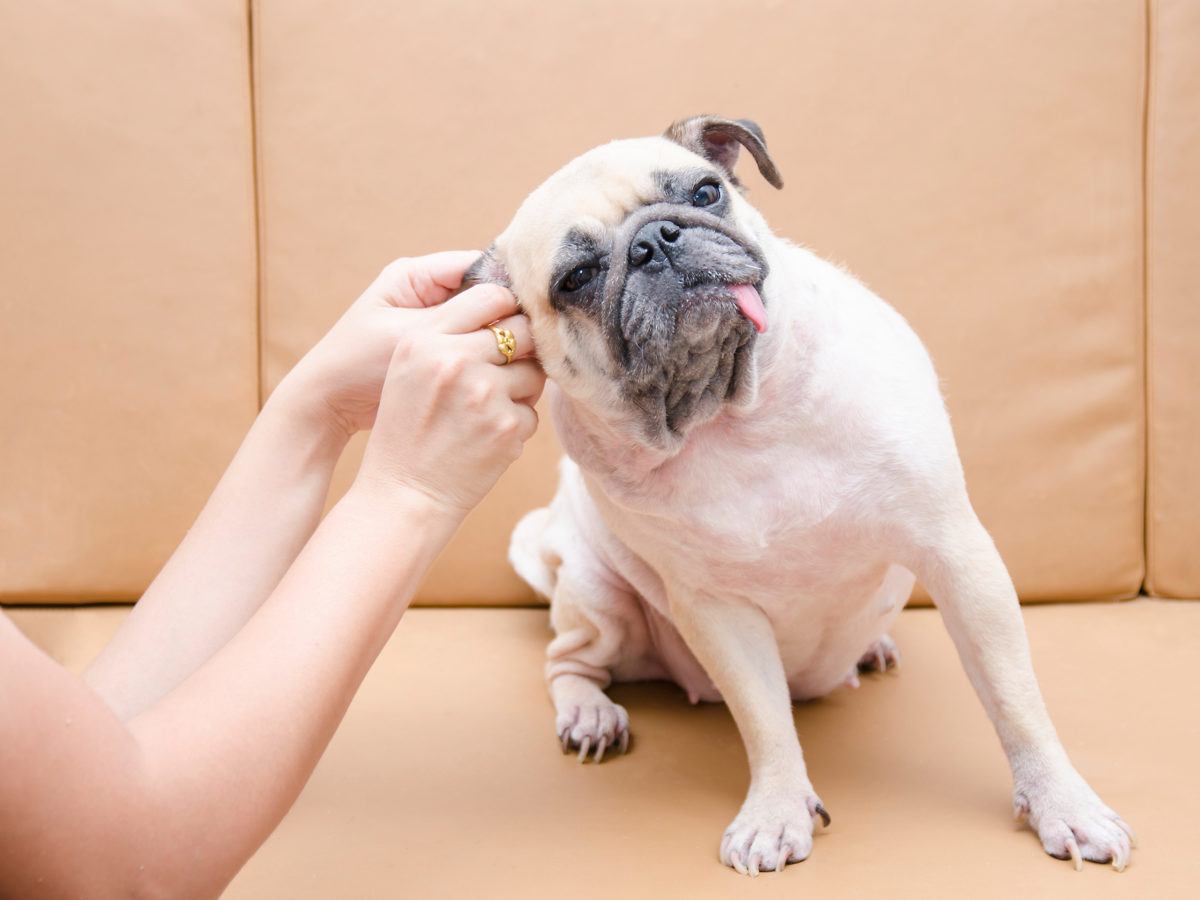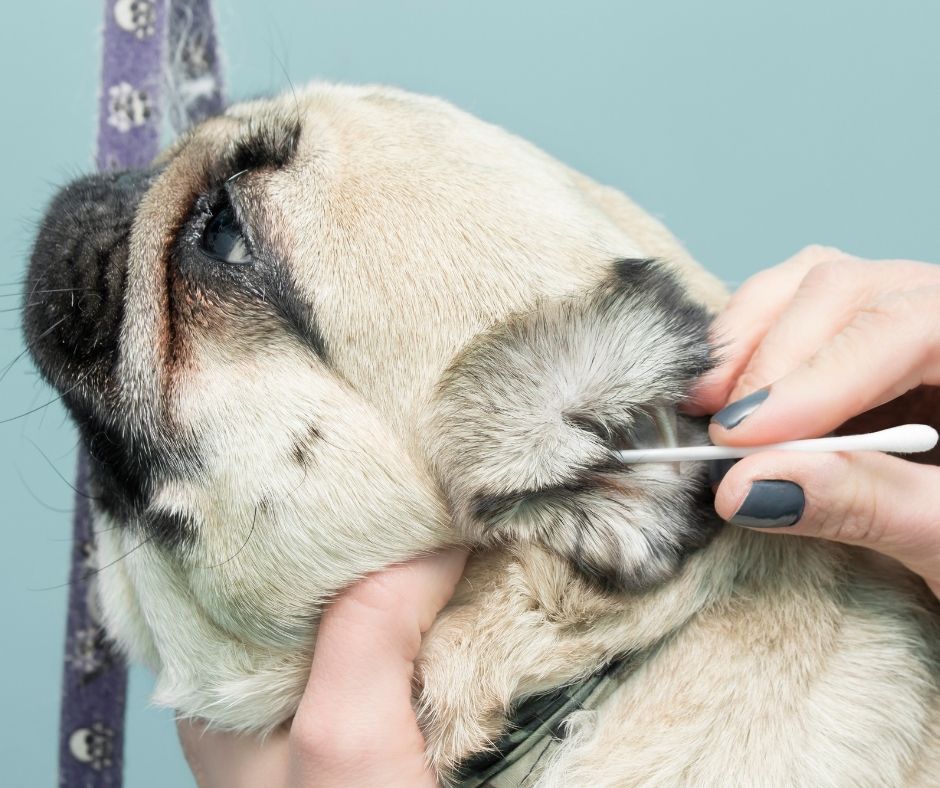Table of Contents
Understanding the Potentials of Coconut Oil for Dogs Ears

Man’s best friend deserves the best care, especially when it comes to their health and well-being. Among the many challenges dog owners face, maintaining optimal ear health for their furry companions is paramount. From pesky infections to uncomfortable irritations, ear issues can significantly impact a dog’s quality of life. Fortunately, nature often provides solutions. Coconut oil in dogs ears are both effective and gentle. One such remedy gaining popularity among pet owners is coconut oil.
Coconut oil has long been celebrated for its versatile uses in human health and skincare, but its benefits extend beyond the realm of human wellness. In recent years, pet owners and veterinarians alike have turned to this natural oil as a holistic approach to addressing various canine health concerns, including those related to ear health.
In this article, we delve into the science behind coconut oil’s efficacy, exploring how it can be used to promote healthy ears in dogs and offering practical tips for integrating it into your pet care routine. Whether your furry friend suffers from chronic ear infections or you simply seek preventive measures, understanding the potential of coconut oil for dogs ears is a step toward providing your pet with the care they deserve.
Understanding the Anatomy of a Dog’s Ear
Understanding the structure of a dog’s ear and recognizing common issues that can arise is essential when considering coconut oil for dogs ears and for prompt treatment when necessary. Regular cleaning and inspection of your dog’s ears, along with consultation with a veterinarian, can help maintain optimal ear health and prevent more serious complications.
Structure of a Dog’s Ear
A dog’s ear consists of three main parts: the outer ear (pinna), the middle ear, and the inner ear. The outer ear is the visible part of the ear, including the ear flap (or pinna) and the ear canal. The ear canal extends from the ear flap to the eardrum (tympanic membrane). The middle ear is located behind the eardrum and contains small bones that transmit sound vibrations to the inner ear. The inner ear includes the cochlea, responsible for hearing, and the vestibular system, responsible for balance.
Common Ear Issues in Dogs
- Infections (Otitis Externa): This is one of the most common ear problems in dogs and occurs when the external ear canal becomes inflamed and infected. Bacteria, yeast, or other microorganisms can cause infections, leading to symptoms such as redness, swelling, odor, discharge, and discomfort.
- Inflammation: Inflammation of the ear canal (otitis externa) or middle ear (otitis media) can occur due to various factors, including allergies, foreign objects, trauma, or underlying health conditions. Inflammation often results in pain, itching, redness, and swelling.
- Wax Buildup (Cerumen Impaction): Dogs naturally produce ear wax (cerumen) to protect the ear canal and trap debris. However, excessive wax accumulation can occur, leading to blockages and discomfort. Wax buildup may contribute to ear infections or inflammation if not addressed promptly.
- Ear Mites: These microscopic parasites can infest a dog’s ears, causing irritation, inflammation, and intense itching. Ear mites are highly contagious and can spread from one pet to another through direct contact.
- Hematomas: Aural hematomas occur when blood vessels within the ear flap rupture, leading to the accumulation of blood and swelling. Trauma, vigorous scratching, or head shaking are common causes of hematomas, which require veterinary attention to prevent complications.

The 6 Benefits of Coconut Oil for Dogs Ears
Incorporating coconut oil for dogs ears for care routine can offer a range of benefits, promoting cleanliness, comfort, and overall well-being. However, it’s essential to use coconut oil safely and consult with a veterinarian, especially if your dog has underlying health conditions or if you’re unsure about proper application techniques.
- Antimicrobial Properties: Coconut oil contains lauric acid, which exhibits potent antimicrobial properties. When applied to a dogs ears, coconut oil for dogs ears can help combat bacterial, fungal, and yeast infections, reducing inflammation and promoting healing.
- Moisturization and Soothing: Coconut oil for dogs ears serves as a natural emollient, effectively moisturizing the skin inside a dog’s ears. This moisturizing action helps alleviate dryness and itchiness, providing relief to dogs experiencing discomfort due to various ear issues.
- Anti-inflammatory Effects: The anti-inflammatory properties of coconut oil can help soothe irritated and inflamed ear tissue. By reducing inflammation, coconut oil in dogs ears can relieve pain and discomfort associated with conditions like ear infections and allergies.
- Wax Softening and Removal: Coconut oil can soften and loosen hardened ear wax, making it easier to remove during routine cleaning. This can help prevent wax buildup, which can contribute to ear infections and other ear problems in dogs.
- Gentle Cleaning Action: Coconut oil can serve as a gentle cleanser for a dog’s ears, helping to remove dirt, debris, and excess wax without causing irritation. Regular use of coconut oil for ear cleaning can maintain cleanliness and prevent the buildup of harmful microorganisms.
- Promotion of Healthy Skin and Hair: Applying coconut oil for dogs ears can help maintain the health of the skin and hair in the ear canal. By nourishing the skin and hair follicles, coconut oil supports overall ear health and can contribute to a shiny, lustrous coat.
Application Methods of Safely Applying Coconut Oil for Dogs Ears
The below guidelines ensure that you safely and effectively apply coconut oil for dogs ears, promoting cleanliness, comfort, and overall ear health. Remember to monitor your dog for any signs of irritation or discomfort after application, and consult with your veterinarian if you have any concerns.
Start with Cleaning
Before applying coconut oil for dogs ears, gently clean your dog’s ears to remove any dirt, debris, or excess wax. Use a veterinarian-approved ear cleaner or a mixture of equal parts water and apple cider vinegar. Moisten a cotton ball or soft cloth with the ear cleaner and wipe the outer ear flap and visible part of the ear canal. Avoid inserting anything into the ear canal, as this can cause injury.
Warm the Coconut Oil
Coconut oil solidifies at cooler temperatures, so warm a small amount of coconut oil between your palms until it melts into a liquid. This makes it easier to apply and ensures better absorption.
Apply Coconut Oil for Dogs Ears Gently
Dip a clean cotton ball or soft cloth into the melted coconut oil, ensuring it’s not too hot. Apply a small amount of coconut oil to the inside of your dog’s ear flap and the visible part of the ear canal. Be cautious not to apply too much oil or get it deep into the ear canal, as this can lead to discomfort or interfere with normal ear function.
Massage the Ears
After applying coconut oil for dogs ears, gently massage the base of your dog’s ear for 30 seconds to a minute. This helps distribute the oil and encourages absorption into the skin. Massaging also promotes relaxation and can be a soothing experience for your dog.
Allow Your Dog to Shake
After massaging, allow your dog to shake their head naturally. This helps dislodge any excess oil or debris from the ear canal and outer ear. You may want to do this outside or in an area where cleanup is easy, as shaking can cause oil and debris to splatter.

Potential Considerations and Precautions
This section contains 5 important factors to consider when using coconut oil for dogs ears, such as potential allergic reactions, proper dosage, and consulting with a veterinarian before starting any new treatment regimen.
Potential Allergic Reactions
Dogs, like humans, can be allergic to certain substances, including coconut oil. Before applying coconut oil to your dog’s ears, perform a patch test on a small area of skin to check for any allergic reactions.
Watch for signs of itching, redness, swelling, or discomfort after application. If any adverse reactions occur, discontinue use immediately and consult with your veterinarian.
Proper Dosage and Application
Use coconut oil in moderation and avoid over-application. Applying too much coconut oil for dogs ears or using it too frequently can lead to greasiness and may interfere with normal ear function. Start with a small amount of coconut oil and gradually increase as needed. Follow the recommended guidelines for application frequency provided by your veterinarian or based on your dog’s specific needs.
Consultation with a Veterinarian
Before starting any new treatment regimen, including the use of coconut oil for dogs ears, consult with your veterinarian. They can provide personalized advice based on your dog’s health history, any existing ear issues, and potential interactions with other medications or treatments. Your veterinarian can also offer guidance on proper application techniques, frequency of use, and whether coconut oil is suitable for your dog’s individual needs.
Underlying Health Conditions
Consider any underlying health conditions your dog may have before using coconut oil in their ears. Dogs with certain medical conditions, such as chronic ear infections, allergies, or immune system disorders, may require specialized care and treatment. Discuss with your veterinarian whether coconut oil is appropriate for your dog’s specific condition and whether it may complement existing treatment plans.
Monitoring for Adverse Effects
After applying coconut oil for dogs ears, monitor them closely for any signs of adverse effects or changes in ear health. Watch for increased itching, redness, swelling, discharge, or other abnormalities. If you notice any concerning symptoms, discontinue use of coconut oil and contact your veterinarian for further evaluation and guidance.
READ ALSO
- Mastering the Art of Long Haired Chiweenie Care: Top 10 Tips for Caring for Your Long Haired Chiweenie
- Rhodesian Ridgeback Loves You – 5 Facts about Rhodesian Ridgeback Dog Breed
- Dental Care For Your Dog: How To Keep Their Teeth In Good Shape
- Pregnant Dog Care Tips – 9 Comprehensive Signs, Care, and Preparing for Puppies
FAQs
What is the best oil to clean a dog's ears with?
To clean their ears, use an alcohol-free solution like mineral oil, hydrogen peroxide, or a commercial dog ear wash. Wet a cotton ball with the wash and begin to wipe the ear canal, starting from the outside, in.
Is putting coconut oil in ear safe?
Most people prefer to use coconut oil for treating ear infections as a very effective home remedy. This is because of its safety, easy application procedure as well as its efficacy.
Is coconut oil good for dog infection?
When consumed in moderation, MCTS can provide several benefits, including reducing skin inflammation. MCTs also metabolize quickly and provide an immediate source of energy.
Is it safe to put oil in dog ear?
Never put olive oil, vinegar, shampoo, or any other substance in a dog's ear. Also, avoid poking around with cotton buds in the ear, you will only work any wax and debris further in and potentially damage the eardrum.




